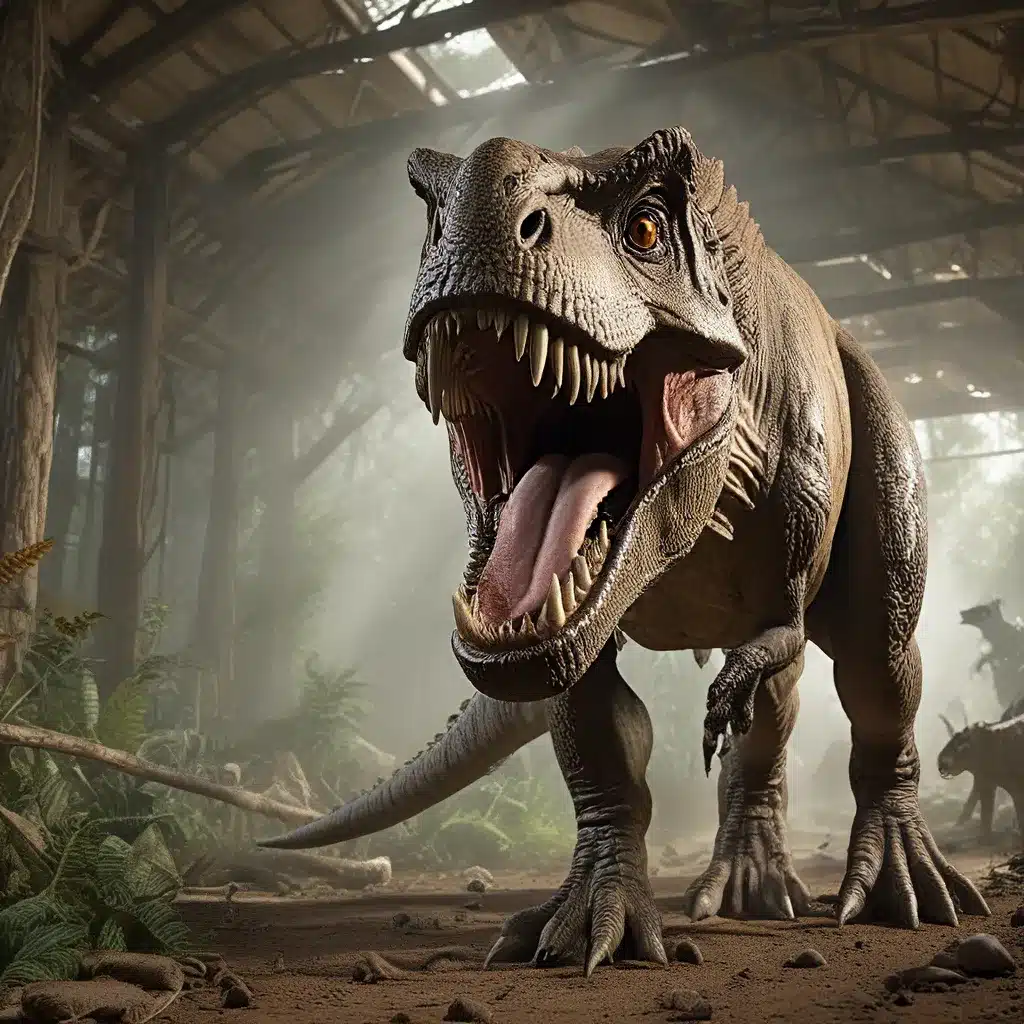
Uncovering the Mysteries of the Prehistoric World
The study of dinosaurs and ancient life has long captivated the human imagination, sparking our curiosity about the distant past and the incredible diversity of life that once roamed our planet. From the towering Tyrannosaurus rex to the gentle Brachiosaurus, these magnificent creatures have left an indelible mark on our understanding of the world’s evolutionary history.
Recent advancements in archaeological and paleontological research have shed new light on the lives and habitats of these prehistoric giants, allowing us to piece together a more comprehensive picture of their existence. As we delve deeper into the fossil record, we uncover not only the physical remains of these ancient beings but also the clues that reveal their behaviors, adaptations, and the environmental conditions that shaped their evolution.
One of the most significant developments in the field of dinosaur research has been the increased use of advanced imaging techniques, such as CT scanning and 3D modeling, which have revolutionized the way we study and interpret fossils. These technologies enable scientists to gain unprecedented insights into the internal structures and anatomical features of dinosaur specimens, allowing them to make more accurate and detailed reconstructions of these prehistoric creatures.
Uncovering Dinosaur Habitats and Ecosystems
The study of dinosaur habitats and ecosystems has also been a crucial area of focus for paleontologists and archaeologists. By analyzing the geological and environmental evidence found at fossil sites, researchers are able to paint a clearer picture of the ancient landscapes, climates, and the complex web of interactions that existed within these prehistoric ecosystems.
For instance, the discovery of fossilized plants and trace fossils (such as footprints and burrows) has provided valuable information about the vegetation and prey-predator relationships that characterized various dinosaur-dominated environments. These findings have helped scientists better understand the food chains, resource partitioning, and adaptations that allowed different species of dinosaurs to coexist within their respective habitats.
Moreover, the study of taphonomy – the processes that lead to the preservation of fossils – has shed light on the specific conditions and events that led to the preservation of these ancient remains. This knowledge, in turn, has informed our understanding of the paleoecology and depositional environments in which dinosaurs lived and died.
Unlocking the Secrets of Dinosaur Behavior and Evolution
One of the most captivating aspects of dinosaur research is the ongoing effort to unravel the mysteries of their behavior and evolution. Through the analysis of fossil evidence, trackways, and modern-day analogues, scientists have been able to make educated inferences about the social structures, hunting strategies, migratory patterns, and reproductive behaviors of various dinosaur species.
For example, the discovery of nesting sites and hatchling fossils has provided valuable insights into the parental care and nesting behaviors of certain dinosaur species, challenging the long-held notion that these prehistoric creatures were solitary and indifferent to their young. Similarly, the study of dinosaur trackways has shed light on their locomotive abilities, group dynamics, and even the possible existence of herd migration patterns.
Furthermore, the integration of molecular and genetic analyses has opened up new avenues for understanding the evolutionary relationships and phylogenetic connections between different dinosaur lineages. By studying the DNA and protein sequences preserved in fossil remains, researchers are gaining a deeper understanding of the genetic mechanisms that drove the diversification and adaptation of these ancient animals.
Embracing the Legacy of Dinosaurs in the Modern World
As we continue to uncover the captivating stories of dinosaurs, it is essential to consider the broader cultural and educational significance of these ancient creatures. Dinosaurs have long captured the public’s imagination, inspiring countless works of art, literature, and popular culture, and serving as ambassadors for the wonders of the natural world.
The study of dinosaurs has also played a crucial role in science education, fostering a love of learning and a deeper appreciation for the evolutionary processes that have shaped our planet. By engaging with these prehistoric marvels, both young and old can develop a sense of wonder and curiosity about the natural world, and be inspired to pursue careers in STEM fields, such as paleontology, geology, and evolutionary biology.
Moreover, the legacy of dinosaurs extends beyond the academic realm, as these ancient creatures have become symbols of resilience, adaptation, and the enduring power of life. As we grapple with the environmental challenges facing our modern world, the stories of dinosaurs can serve as a powerful reminder of the importance of preserving and protecting the delicate balance of our ecosystems.
Embracing the Future of Dinosaur Research and Discovery
As we stand on the precipice of a new era of dinosaur discovery, it is clear that the roar of the past will continue to echo through the ages, inspiring generations to come. With the aid of advanced technologies, collaborative research, and a steadfast commitment to scientific inquiry, the future of dinosaur research holds the promise of even more groundbreaking discoveries and a deeper understanding of these magnificent creatures.
Through the pages of this article, we have explored the enduring fascination with dinosaurs, the remarkable advancements in the field of paleontology, and the profound implications of these ancient creatures for our understanding of the world around us. As we continue to uncover the secrets of the prehistoric world, let us embrace the legacy of dinosaurs and the lessons they have to offer, ensuring that their roar will be heard for generations to come.


